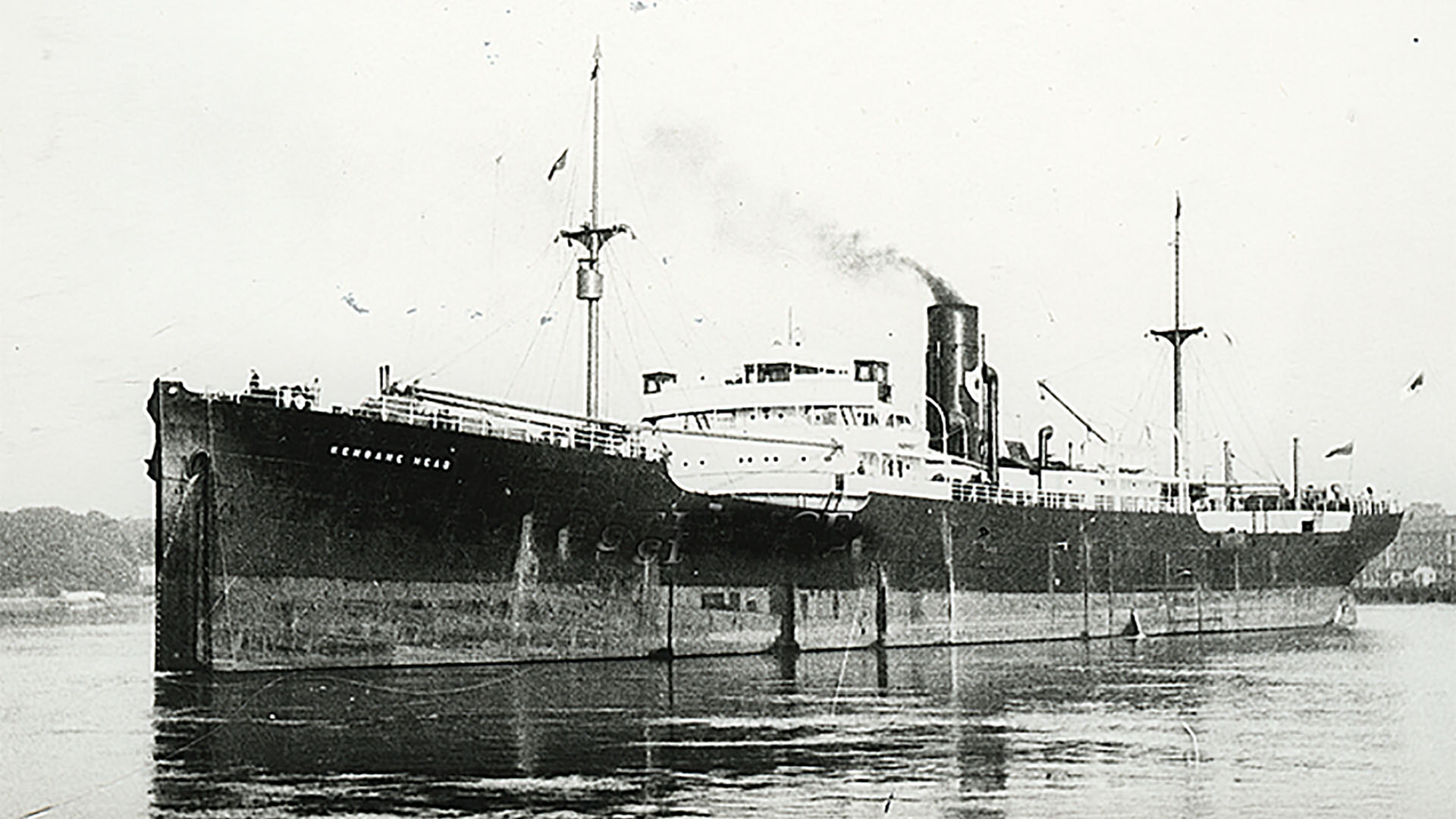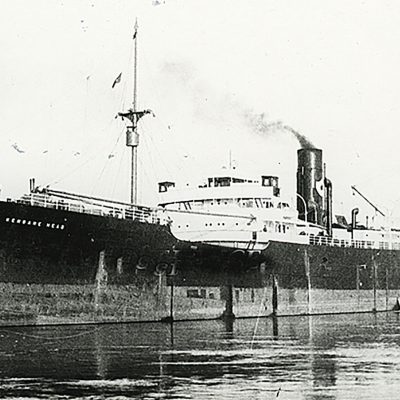Kenbane Head was a 5,225GRT cargo ship of the Ulster Steamship Co. Ltd. On its final voyage, it loaded with cargo in Montreal and Sydney, Nova Scotia before joining 37 other vessels in Convoy HX-84.
The convoy departed Nova Scotia, Canada on 28th October 1940 bound for Liverpool via S.S. Kenbane Head’s home port of Belfast. The cargo included steel, military trucks, and maize.
At around 1630hrs on 5th November 1940, Convoy HX-84 scattered southeast of Cape Farewell, Greenland. German Pocket Battleship Admiral Scheer intercepted the convoy and Kenbane Head faced the full force of the German guns. Captain Theodor Krancke’s first 3 rounds punctured the ship’s cargo holds. A second salvo damaged the engine room, destroyed the funnel, and took out the stern gun platform.
Krancke had been on patrol in the North Atlantic since 14th October 1940 helped by a pair od Arado Seaplanes. One of these planes spotted Convoy HX-84, which included SS Kenbane Head. Other ships sank by Krancke on that day included Fresno City, S.S. Maidan, S.S. Beaverford, S.S. Mopan, S.S. Trewellard, and H.M.S. Jervis Bay. S.S. San Demetrio escaped damaged.
Kenbane Head went down after a blazing fire on board forced the crew to abandon the vessel. A total of 24 men died on board during the attack from Admiral Scheer. That evening, another British Merchant vessel, Gloucester City sailed through heavy seas and Force 10 winds. The Captain had picked up distress calls and raced to the scene. A little over 37 hours later, Gloucester City arrived to a scene of devastation. Wreckage and lifeboats covered a distance of 50 square miles. The Captain guided Gloucester City through the wreckage, picking up survivors from 4 of the sunken ships. This included 24 men from Kenbane Head who landed at St. Johns, New Brunswick, Canada.
S.S. Kenbane Head took its name from a rocky outcrop, home to a historic castle near Ballycastle, Co. Antrim.

